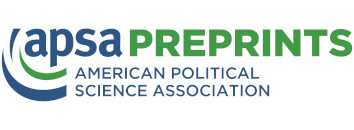Abstract
The reimposition of a 25% “secondary tariff” by former U.S. President Donald Trump on Indian imports—especially those seen as indirect substitutes for Chinese goods—poses a strategic challenge for India’s manufacturing and export sectors. This protectionist measure aims to secure American industries while discouraging China’s geopolitical supply chain leverage. However, it also penalizes emerging export economies like India.
This paper proposes a counter-strategy using the C.U.T.E. framework, which is derived from Porter’s Generic Strategies, to help Indian manufacturers navigate and respond to this trade shock. It offers Indian manufacturers and policy-makers a multidimensional lens to navigate these geopolitical trade disruptions. The framework bridges classical management strategy with real-world policy tools, focusing on Cost Advantage, Uniqueness, Target Market focus, and Strategic Edge.


![Author ORCID: We display the ORCID iD icon alongside authors names on our website to acknowledge that the ORCiD has been authenticated when entered by the user. To view the users ORCiD record click the icon. [opens in a new tab]](https://preprints.apsanet.org/engage/assets/public/apsa/logo/orcid.png)




